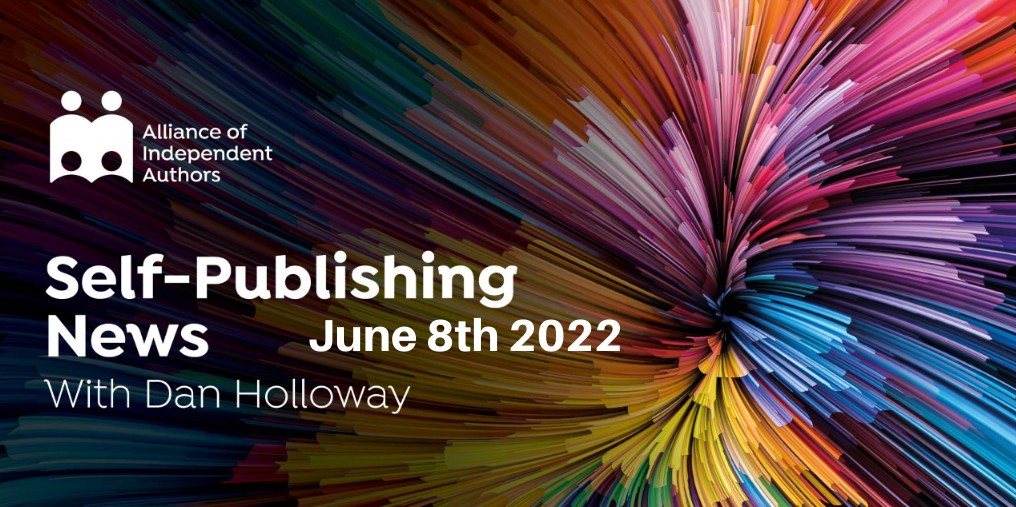In this week's Self-Publishing News Special, ALLi News Editor Dan Holloway looks at New York’s new law designed to stop the exploitation of freelance creatives and the implications of a continuing fall in print sales.

ALLi's News Editor Dan Holloway
This week's #indieauthorchat is tonight, Wednesday 1 June, at 8pm UK time, 3pm Eastern Time. Tim will be looking at something I'm sure many will think but few would articulate: does writing make you a better person? Please do also catch up with the latest self-publishing news podcast, which you can listen to here. In it, Howard and I look in depth at the recent controversies around the role of librarians in curating content among many other things.
Freelance Isn’t Free: Protecting Freelance Creators from Payment by Exposure
Free is one of the most interesting words in that particular cultural water that pools in the overlap between technology and publishing. The free software movement gave us the slogan “free as in speech not free as in beer.” Then, just when I was starting out as an indie author almost a decade and a half ago, Chris Anderson of TED and long tail fame centred the idea of freemium.
This week we have the passing of a new law in New York designed to avoid one of the more egregious uses of the word “free”. The Freelance Isn’t Free Act seeks to give freelancers the right to be paid in more than exposure. And within a reasonable timeframe. The hope is that it will transform parts of the creative economy for the better. It would protect those of us who do speaking or reading gigs. Not to mention journalism and copywriting. And editing.
Under the Act, freelancers will receive contracts for the work they undertake. These should lay out the amount and terms of payment. And they are entitled to be paid within 30 days of completion of the work. If that doesn’t happen, they are entitled to double. Of course, it’s worth remembering that indie authors aren’t just freelancers ourselves from time to time. We also hire people on freelance terms.
What do Falling Print Figures Mean for Indies?
During what felt like 18 months of the pandemic, one of the surprising news stories was the strength of print sales. In recent months, that has not only changed, the figures have gone into rapid reverse. This week saw the latest in a long list of year on year decreases in print sales. Figures for the end of May are down 9.3% in the US compared to 2021. And all genres are affected. But what does this actually mean? Is it even possible at times of such turmoil to discern any kinds of trend that might hold true for the long term?
Most of all, what should we be paying attention to as indie authors? How much of our very overstretched bandwidth should we be devoting to print?
Selling Print in Bookstores
I want to consider our connection to print in relation to this fascinating post about indie bookstores. Like print (possibly because the situation is so similar to print), indie bookstores and indie authors have a complicated relationship. Indie authors and indie bookstores have always felt like we should be natural partners. But we rarely are. This piece explains why. We haven’t figured out, by and large, the terms of a special relationship.
Those authors and stores who have figured out how to create something that works for both of them have made it work. Sometimes really well. Indie authors will often give something stores struggle to find. We will spend long hours doing signings, give readings, put on something really special. In return, indie stores are able to give us what chains can’t. Dedicated display space we don’t have to pay a fortune for. And personal recommendations to local customers.
But one store is one store. From an indie author perspective, that kind of effort is hard to scale. And from the perspective of many indie store owners, display space for known big sellers is something they feel they can’t afford to mess with. Add to that the cost of returns and discounts which make it hard for us to sell through stores.
Print on Demand's Role in Our Future
But that doesn’t mean we should give up on selling print. Another of this week’s news stories sees Amazon launch print on demand through KDP in Sweden. And as I have repeatedly reported in this column, print on demand addresses the big concerns of returns and sustainability that increasingly drive consumer decisions. In theory, the rise of apps like Bookshop.org should also make it easier for indie stores to benefit from our print on demand books without the cost to us of full discounts or the risk to them of carrying unreturnable stock.
Is Traditional Publishing Embracing Self-publishing as Part of a Shared Future?
Sustainability is, it will come as no surprise, at the heart of a new look at the future of publishing. White Fox are a fascinating company. One of the more innovative service providers, they straddle traditional and indie worlds with ease. They have celebrated 10 years in the business by asking some of the industry’s senior figures for a scan of the horizon 10 years hence.
Interestingly, alongside sustainability is the prediction of an increase in sales across formats. And especially interesting is the lack of linkage. I can understand the industry writing off NFTs with all their environmental issues. But digital publishing in general is far from sustainable. Not just in terms of emissions but in terms of the damage done by the mineral mining involved in the production of hardware and batteries. One thing I was delighted to see in the report was a reflection on the continued need for diversity across the industry, somewhere I hope indies continue to take the lead.
Most interesting is the section of the report that talks about self-publishing. Lots of key figures are clear they see self-publishing as an increasing part of the future. That's fantastic. What's interesting is that some contributors still talk about the stigma attached to self-publishing decreasing over the next 10 years. Notably though, not the ever fabulous Sam Missingham, who foresees a widespread opening up to indie authors. It's been many years since I even heard the word “stigma” associated with self-publishing from Sam and others close to what we do. Which makes it feel as though some people are still trying to convince themselves!
Self-publishing News: New Law Promises Better Treatment of Freelance Creatives Share on XUpcoming Conferences and Events
Bay Area Independent Publishers Association (BAIPA) – Zoom meetings the 2nd Saturday of each month
JUNE 2022
Indie Unconference, 9-12 June, Matera




